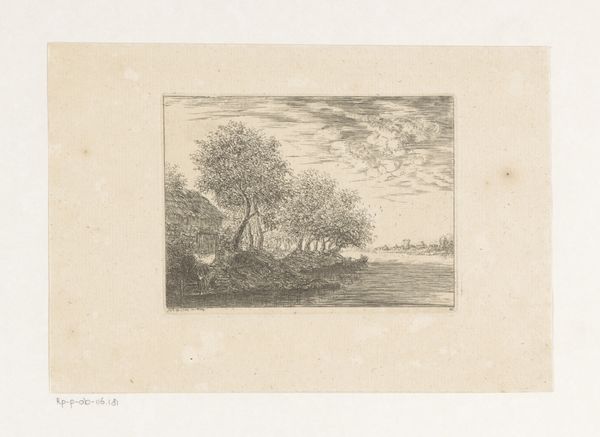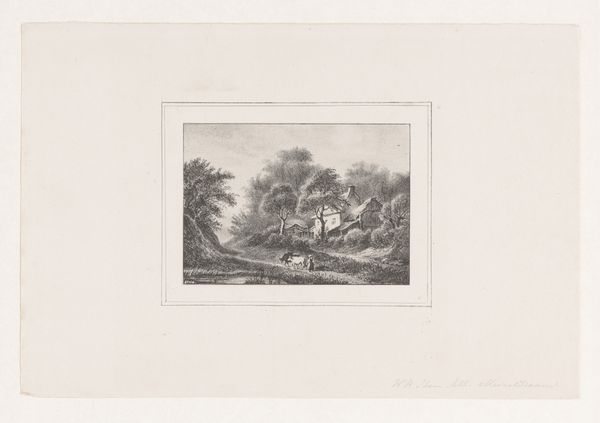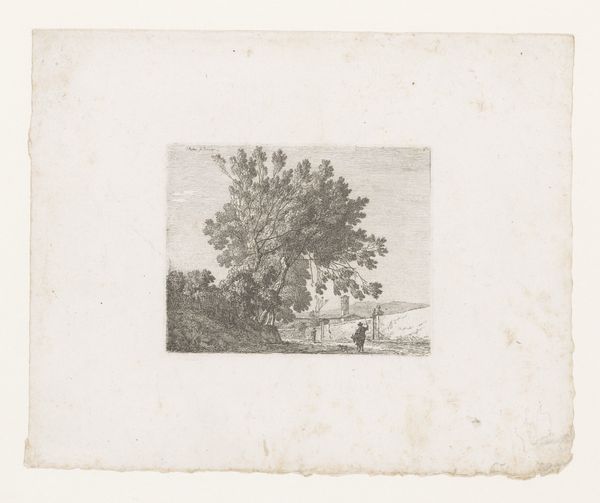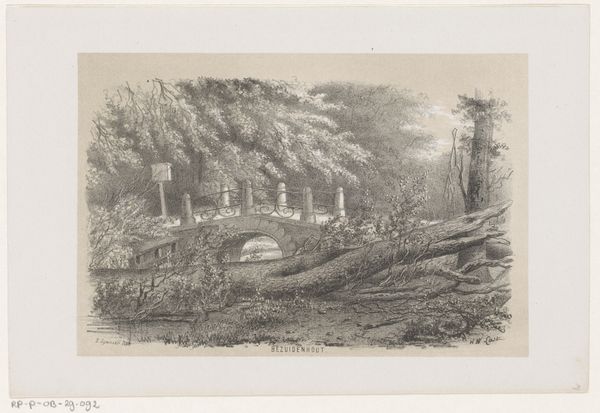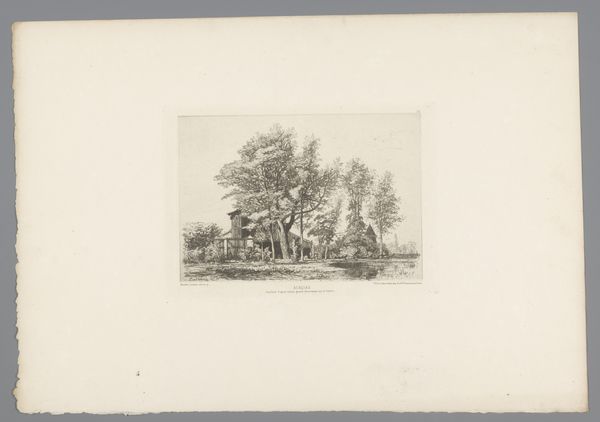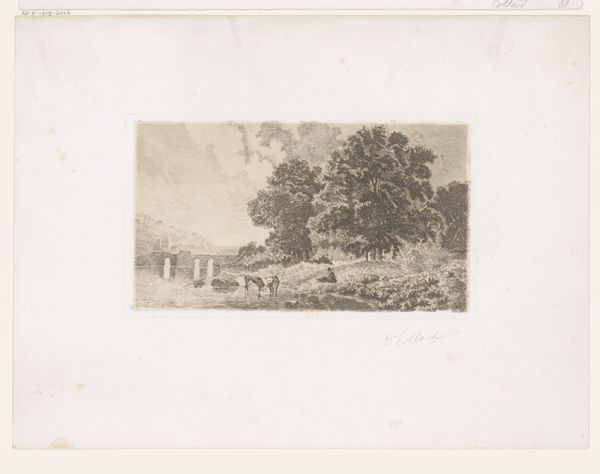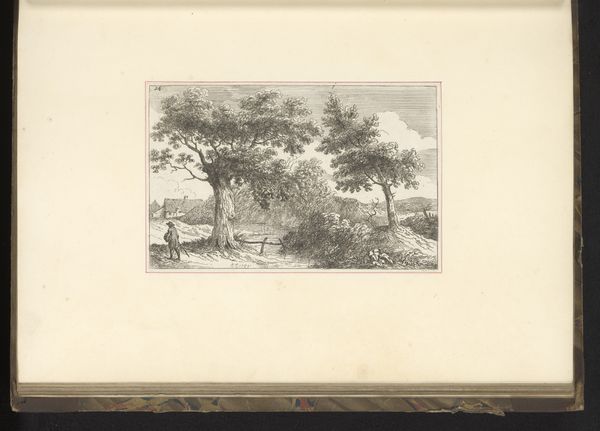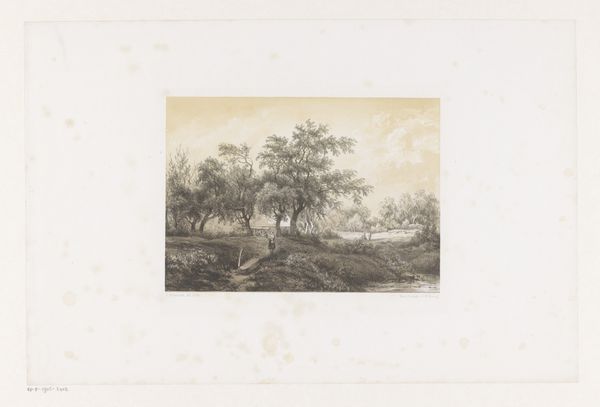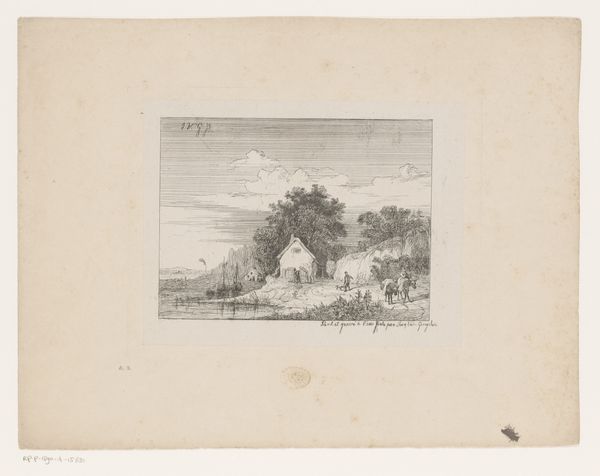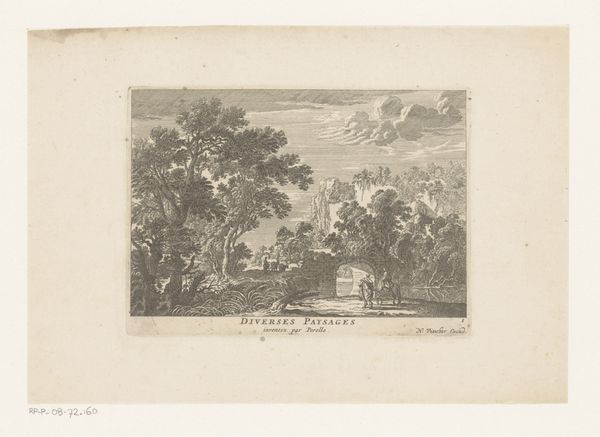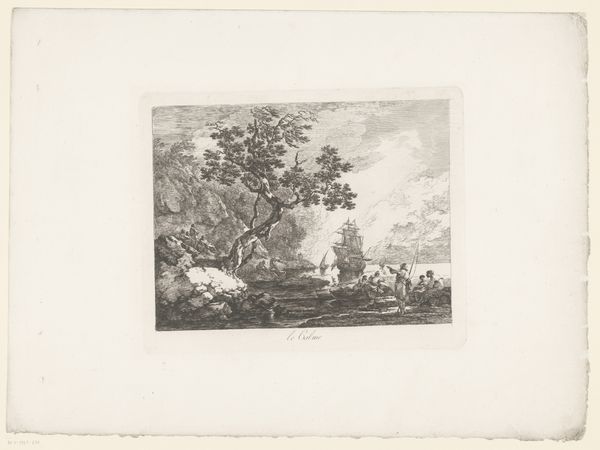
print, engraving
#
vegetal
#
light pencil work
# print
#
old engraving style
#
landscape
#
forest
#
natural background
#
botanical drawing
#
cityscape
#
watercolour illustration
#
pale flat background
#
engraving
#
botanical art
Dimensions: height 240 mm, width 300 mm
Copyright: Rijks Museum: Open Domain
Curator: Willem Bastiaan van Wouw's engraving, "Bosrand, landweg en gezichten op Den Haag," or "Woodland edge, country road and views of The Hague," dates from between 1844 and 1871 and resides here at the Rijksmuseum. What strikes you initially about this work? Editor: An odd tranquility. Despite depicting what seems to be the outskirts of a bustling city, there's a somber peacefulness. It is as if we’re looking back through a haze of memory. Curator: I find the process compelling. The layering of city views around a central image of nature—it's almost like an exercise in visual juxtaposition, especially rendered as a print. It speaks to the transition from rural life to urban expansion, mass production of this very image and others of its ilk allowing for easy consumption by the bourgeoisie. Editor: The vignettes feel less about objective city documentation and more about creating symbolic connections. Look at the balance, a carefully rendered grouping that feels emotionally strategic. Each structure almost hovers with cultural significance. The scales depicted feel especially important, a sign of cultural weight that begs for deconstruction. Curator: But are we to disregard the craft? The very deliberate choices in mark-making, suggesting shadow and depth... It's not simply about symbolic connection; it’s about labor, the very physical act of creation shaping how we understand place and value in the 19th century. We, ourselves, must be cognizant of that labour as we engage with and consume this product of 19th century output. Editor: True, the artist's hand is undeniable. But consider the emotional investment tied to these places and rendered objects. Even the lettering feels antiquated but symbolic. There’s a psychological weight there, perhaps a quiet lament for a changing landscape, literally engraved onto the paper. Curator: An apt point, highlighting how an artistic rendering transcends its materials. By digging beneath its surface of what must have been reproduced for a voracious buying public, we expose deeper socio-cultural sentiments. Editor: Exactly. These aren't just pictures, these are relics—mirrors reflecting how society viewed progress and nature itself during the height of industrial ambition. I wonder if any were sent away in the post, or pinned to family walls far from the home depicted. Curator: Thank you for unearthing some new terrain for our appreciation of van Wouw's process. The implications of that act cannot be overlooked. Editor: And thank you for reminding me about the human connection—and the inherent cost to it all.
Comments
No comments
Be the first to comment and join the conversation on the ultimate creative platform.

